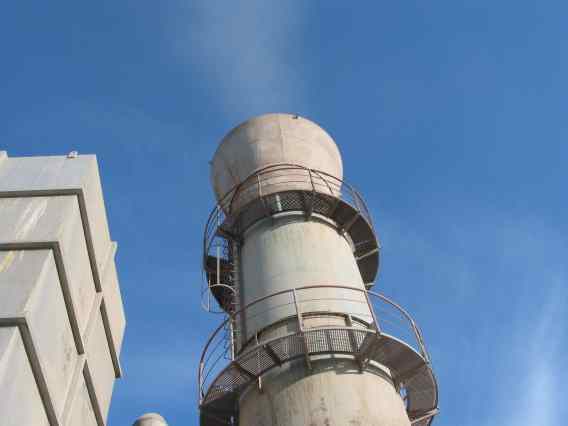Can we help you?
Contact us

Can we help you?
Contact us

Thank you for contacting us
Your form has been submitted successfully Our team will contact you again as soon as possible.
Whooppss...!! An error has occurred
Try sending later or write an email directly to areaempresas@ua.es

INFO
SHEET
DOWNLOAD
EXECUTIVE
ABSTRACT
CONTACT DETAILS: Research Results Transfer Office-OTRI
University of Alicante
Tel.: +34 96 590 99 59
Email: areaempresas@ua.es
http://innoua.ua.es
The Department of Chemical Engineering has extensive experience in the determination of the toxicity of wastes, considering several tests presented in the following sections. The results obtained are discussed in accordance with different legislations: regions, state, European Union and USA. The determination of the toxic by-products that can be evolved in the combustion of wastes is also interesting on considering alternatives for the treatment of wastes: thermal treatment or disposal in controlled landfills under special conditions.
The procedure proposed can be applied to many wastes: solid, semi-solid and liquids.
The Department of Chemical Engineering of the University of Alicante is involved in carrying out these kinds of analysis and training activities.

The characterization tests proposed are the following:
1. Weight loss at 105 ºC
2. Determination of pH in aqueous samples. With solid samples, the pH is measured in concentrated solutions (using standard tests).
3. Chemical characterization of the waste:
- qualitative and quantitative analysis by different techniques of the following elements: As, Be, Cd, Cr (Cr+3 and Cr+6), Ni, Co, Hg, Cu, Zn, Pb, Se, Ag, V, Sn. Sb, Te, Ba, Tl, F and P.
- determination by extraction techniques and concentration of the organic compounds that can be present in the sample, by gas chromatography/mass spectrometry (HRGC/MS and HRGC/HRMS). The analysis is carried out to detect the presence of benzene, polyaromatic hydrocarbons (PAHs), polyclorinated byphenyls (PCBs), polychlorinated dibenzodioxins and furans (PCDDs and PCDFs).
- determination of cyanides, sulphur and phenols
4. Extraction procedure test, in accordance with the USEPA or the European Union. With the extracts obtained, determination of the concentration corresponding to the compounds detected in the sample.
5. Determination of the flash point of liquid and semi-solid samples.
6. Reactivity tests:
- Stability of the sample, without decomposition in room conditions.
- Reactivity with water at room temperature
- Evolving of gas at pH>2 or pH>12-12.5 and analysis of gas (these
results must be coherent with the determination of sulphur and cyanides).
7. Previous analysis of the explosive and comburent characteristics of the sample.
8. Determination of the overall toxicity of the extract with Photobacterium Phosphoreum (or Vibrio Fischeri).
9. Global analysis of the results, proposal of other tests to complete or assure the determination.
In some cases, it is not necessary to carry out all the test presented previously. In some types of samples, such as sewage sludge, other tests can be performed:
- Determination of LAS (linear alkilbenzene sulphonates), with extraction, purification with resins and determination by HPLC (liquid chromatography).
- Determination of PAHs (polyaromatic hydrocarbons) at low concentrations (levels of ppm).
- Determination of nonylphenol and nonylphenolethoxylates with 1 or 2 ethoxy groups.
- Determination of polychlorinated byphenyls.
- Determination of di(2-ethyhexil)phtalate.
The steps evolved are the addition of internal standards, anhydrous sodium sulphate, extraction, changing of solvent, separation by GPC (gel permeation chromatography), concentration and analysis by GC/MS (gas chromatography/mass spectrometry).
- Determination of EOX (extractable halogenated organic compounds), that includes extraction, combustion , retention of halides of hydrogen and titration with Ag+.
- Determination of PCDD/fs (polychlorinated dibenzodioxins/furans) at levels of ng TE/kg dm, with addition of internal standard, anhydrous sodium sulphate, clean-up with silica, alumina and carbon, addition of recuperation standard and HRGC/HRMS (high resolution gas chromatography/high resolution mass spectrometry).
Concerning the thermal processes of pyrolysis and combustion of wastes, the following compound can be detected in a laboratory furnace as a function of the operating conditions (temperature, fuel rich or air excess conditions, residence time, slow or fast heating, residence time of volatiles):
- carbon oxides (GC)
-sulphur dioxide (apparatus)
-nitric and nitrous oxides (apparatus)
-ammonia, hydrogen sulphur and hydrogen cyanide (retention and titration)
-hydrocarbons with low molecular weight to xylenes (methane, ethylene, propane, toluene, benzene, etc) (GC).
-volatile and semi-volatile compounds from xylenes to PAHs (polyaromatic hydrocarbons) and other organic compounds with molecular weight around 300
(retention, extraction and analysis by GC/MS)
- PAHs with high molecular weight (by fluorescence)
- chlorinated compounds and PCDD/Fs (by HRGC/HR/MS).
The characterization of toxic/hazardous wastes can be a hard task when carrying out all the methods proposed for toxic/hazardous materials. Nevertheless, the samples can be classified when an extensive chemical characterization of the waste and the leaching under different conditions are performed.
All the methods presented previously have been tested in our laboratory.
The characterization methods presented previously are applicable to any industrial waste, chemical sludge and sewage sludge, where the toxicity depends on the chemical components
- Characterization of chemical wastes by the methods presented previously.
- Training in this type of analysis.
Know-how protected by secret.
Pollution and Environmental Impact
Marine Studies
Toys
Stone and Marble
Water Resources
Chemical Technology
Carretera San Vicente del Raspeig s/n - 03690 San Vicente del Raspeig - Alicante
Tel.: (+34) 965 90 9959




